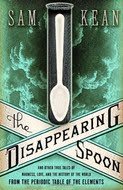You Know When the Men Are Gone
by Siobhan Fallon
In Fort Hood housing, like all army housing, you get used to hearing through the walls. You learn your neighbors’ routines: when and if they gargle and brush their teeth; how often they go to the bathroom or shower; whether they snore or cry themselves to sleep. You learn too much. And you learn to move quietly through your own small domain.Those opening lines hooked me into this terrific collection of short stories that are linked through a shared setting of Fort Hood, Texas, its soldiers who are deployed to Iraq, and their spouses and families who stay behind. The first story sets up military domestic life and that too-closeness to neighbors and authority. The next follows a soldier serving outside Baghdad -- an investment banker who enlisted after 9/11. Others explore suspicions of adultery; wounded soldiers returning early; the difficulty of re-acclimating to home; the public honor and private grief of widowhood.
You also know when the men are gone.
They’re personal stories, not political, and they're gentle and straightforward, to be re-read more for comfort than for a layered understanding. But they’re some of the most engaging reading I’ve encountered ... in fact their readability reminds me of Kathryn Stockett’s The Help
Review based on an advance reading copy provided by the publisher













